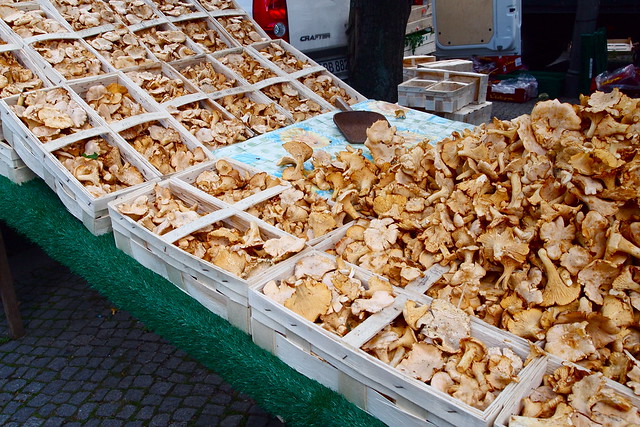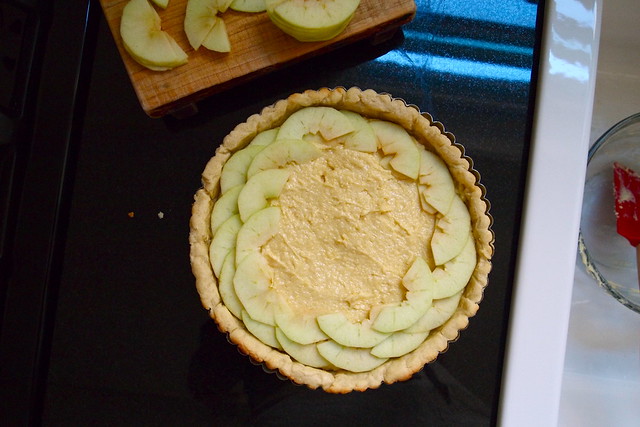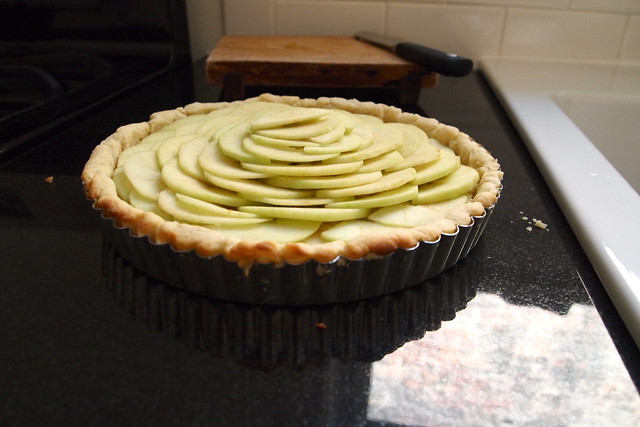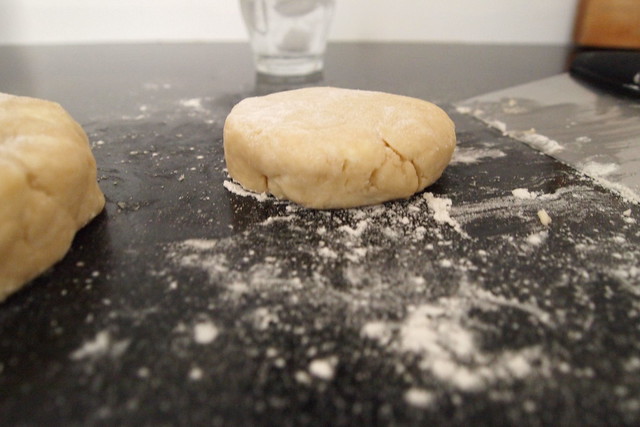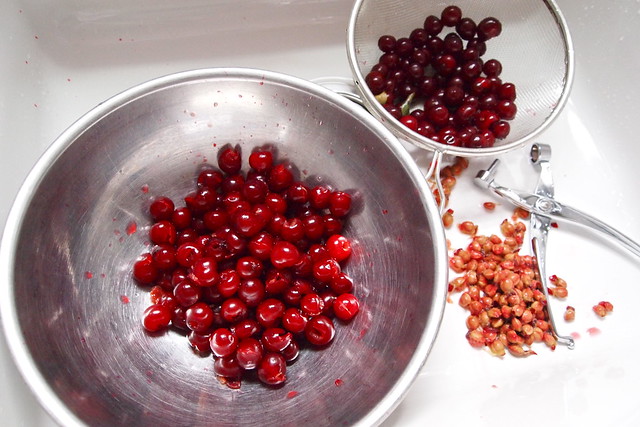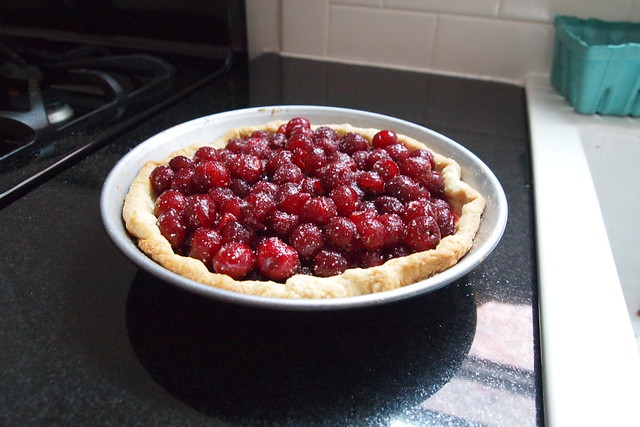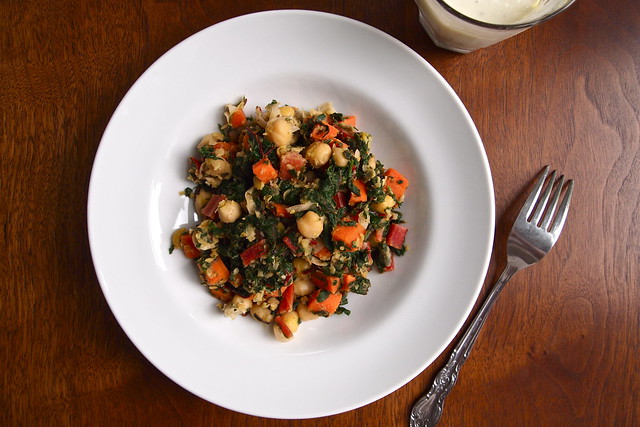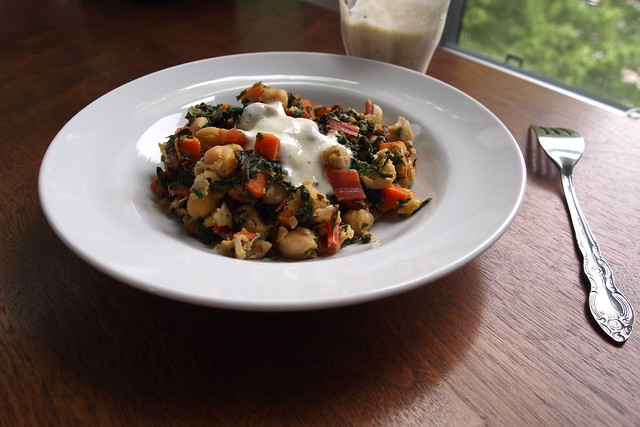When Octavian and I have friends over for dinner, we tend to be a little bold, a little reckless about it. We tend, that is, to turn to that stack of untried recipes, to those intriguing and unfamiliar methods we've only read about, and just go for it, breaths held, fingers crossed. And for the most part, it's worked out for us. Dinner never gets to the table on time, but luck has been on our side.
That wasn't the case last Friday. Last Friday, cooking for friends was just disaster after disaster. First, our beloved workhorse of a santoku broke just as we were lining up some vegetables for chopping. Then the instant-read thermometer went berserk. And, of course, we found this out too late and wound up with some miserably overcooked duck. That was pretty disappointing. But the strangest and most spectacular failure of all that night was definitely reserved for dessert.
Christina Tosi's saltine panna cotta was one of the first desserts to be put on the menu at Ko (one of the more upscale outposts of David Chang's Momofuku empire). And sitting atop a layer of crumbly, peanut-brittle-studded nut crunch and a generous puddle of homemade concord grape jelly, this salty-sweet panna cotta should have been grand--a gussied-up version of an after-school-snack favourite. So I don't really know what happened.
It all looked like it might go just fine when I did a test plating early in the afternoon. I had just set the nut crunch in the jelly and was trying to unmold a panna cotta. I dipped the glass in hot water for a few seconds as directed and then inverted it, hoping the panna cotta would just slide out. I gave it a bit of a tap just to be sure. And it did come out--it just wasn't set and so collapsed on the plate into a sad puddle, dripping down the sides of my grape-jelly-nut-crunch stack. This might not have been so bad--I could have just layered nut crunch and jelly into the remaining glasses--but it turned out this panna cotta was not just puddle-prone but way too salty. So I put some more saltines in the oven to toast and dashed to the store for more cream. I had just enough time to make another batch.
It all looked like it might go just fine when I did a test plating early in the afternoon. I had just set the nut crunch in the jelly and was trying to unmold a panna cotta. I dipped the glass in hot water for a few seconds as directed and then inverted it, hoping the panna cotta would just slide out. I gave it a bit of a tap just to be sure. And it did come out--it just wasn't set and so collapsed on the plate into a sad puddle, dripping down the sides of my grape-jelly-nut-crunch stack. This might not have been so bad--I could have just layered nut crunch and jelly into the remaining glasses--but it turned out this panna cotta was not just puddle-prone but way too salty. So I put some more saltines in the oven to toast and dashed to the store for more cream. I had just enough time to make another batch.
But I wouldn't have bothered had I known what was to come. We discovered this at the table after dinner--though the grape jelly was fine on its own, rather good in fact, together with the panna cotta, it started a volatile chemical reaction in our mouths. It stung on the tongue, in a sort of effervescent way, kind of like Pop Rocks, though not quite as explosive. And maybe this wouldn't even have been so bad--the reaction, admittedly, was kind of cool--but the effervescence made it impossible to taste the concord grapes, and peanut butter and saltines just aren't quite the same without grape jelly.
So I'm not quite sure what to say about last Friday--except that I wish things had gone better, at least for our friends' sake. I guess this sort of thing was just bound to happen with that bit of boldness, that bit of recklessness in our kitchen. I just never expected so much to go so wrong all at once. But even with Friday's disasters still smarting, I think I can say that it's unlikely that we'll change the way we cook for our friends any time soon. We'll admit it--we kind of like bold and reckless.
P.S. If anyone has any insight into what could have happened with the grape jelly, I'd appreciate it. Fellow food geeks, I'm looking at you.
Technical Notes for Milk Bar's Saltine Panna Cotta
For the first time cooking from this book, I found that I was hitting snags and inaccuracies all along the way. It was more than a little disappointing.
- Concord grape juice: the juice calls for 675 g or two quarts of grapes. I portioned out my grapes by weight, even though 675 g was far less than the two quarts called for. Subsequently, I ended up with far less juice than expected.
- Concord grape jelly: it may just be that I didn't cook the jelly for quite long enough after it came to a boil, but for whatever reason, it was a little gritty, as though the pectin NH or the sugar hadn't quite dissolved in cooking.
- Nut crunch: this was by all counts delicious, though mine looked quite a bit drier than it is pictured in the book.
- Saltine panna cotta: Tosi recommends the use of silicone moulds, and having tried and failed with glasses and ramekins, I second that. These panna cotta will barely set and call for a light hand. Also, the recipe calls for 12 g or 1 tablespoon of salt, which I think has to be a mistake. My first batch of panna cotta was inedible. With only a 1/2 teaspoon of salt, the second batch was much better.
- Pop Rocks grape jelly: like I said in the post - grape jelly + panna cotta + tongue = Pop Rocks (sort of)! I don't have the food science background to explain what could have happened.


















